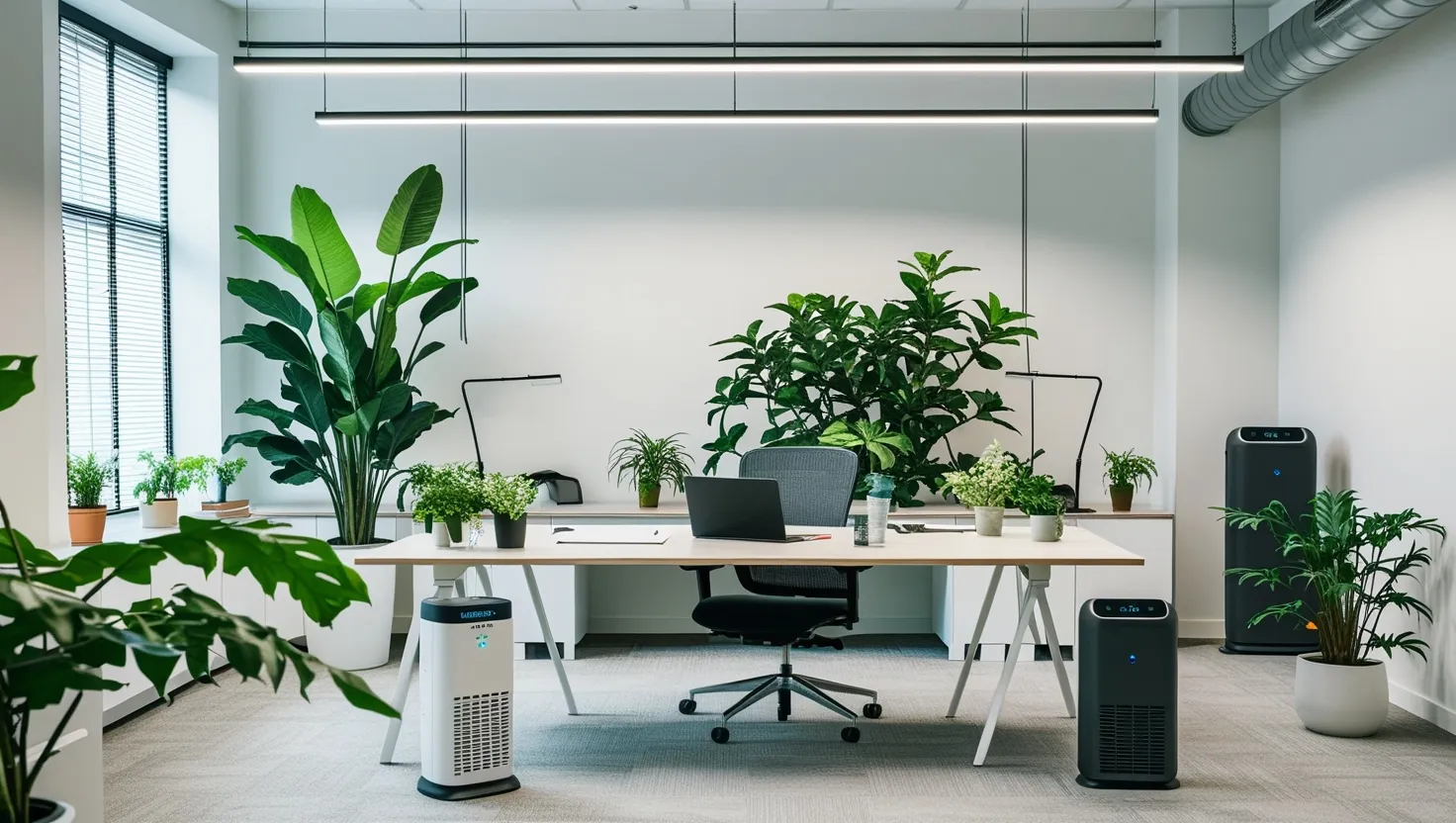When we think about optimizing our workspaces, we often focus on the physical aspects – the height of our chairs, the position of our desks, and the angle of our computer monitors. However, there’s a more profound level of optimization that can significantly impact our productivity and overall well-being: cognitive ergonomics.
Cognitive ergonomics is the science of designing work environments to support and enhance our mental processes. It’s about creating a mental workspace that feels natural and effortless to navigate, much like how we might arrange our physical workspace for maximum comfort and efficiency. By understanding how our brains process different types of information, we can tailor our mental environment to reduce cognitive friction and make work feel less like a chore.
The Impact of Air Quality
One of the most overlooked yet critical factors in cognitive ergonomics is air quality. Poor ventilation and high levels of indoor air pollutants can drastically reduce our cognitive performance. For instance, high carbon dioxide levels can lead to brain fog, drowsiness, and dizziness, impairing our ability to think clearly. A study from 2012 showed that workers in poorly ventilated spaces experienced a 50% reduction in cognitive performance compared to those in well-ventilated environments. By improving ventilation rates, we can significantly boost our mental clarity and productivity.
Lighting: More Than Just Visibility
Lighting is another crucial element that affects our mental workspace. It’s not just about seeing clearly; it’s about how light influences our brain’s ability to process information. Optimized daylight conditions can improve cognitive function by 10-25%, according to a 2017 study. However, it’s important to note that lighting needs vary by time of day and individual preferences. For example, some people may process external stimuli differently due to neurodiversity. Giving employees control over their light levels can be a simple yet effective way to enhance their cognitive performance.
Temperature: The Comfort Zone
Temperature is a subtle but significant factor in cognitive ergonomics. The ideal temperature for cognitive performance differs between men and women, with men performing best at 68-69 degrees Fahrenheit and women at 70-72 degrees. If the room is too cold, it can impair motor skills and even affect our trust in others, making collaboration more challenging. Using IAQ sensors to provide real-time temperature readings can help employees choose the most comfortable spots to work.
The Noise Factor
Noise is a major distraction that can significantly reduce productivity. The average knowledge worker loses about 28% of their day to unwelcome interruptions, which translates to a substantial loss in U.S. productivity – at least $650 billion annually. Contrary to popular belief, younger workers are not better at filtering out background noise; it’s more about individual psychological profiles. Creating quiet spaces or using noise-cancelling tools can help minimize these distractions and improve focus.
Organizing Your Mental Space
Imagine your mind as a customizable workspace where you can arrange thoughts and tasks for maximum efficiency. This isn’t about traditional time management or productivity hacks; it’s about aligning your mental workspace with your cognitive strengths. For some, complex problems might become easier to solve when visualized as 3D structures. For others, linear tasks might flow better when arranged chronologically.
Visual and Spatial Organization
Visualizing tasks and problems in a way that aligns with your brain’s innate organizational preferences can be incredibly powerful. For instance, in the manufacturing sector, a decluttered workstation with tools within easy reach can significantly reduce the mental effort required to switch tasks, enhancing focus and productivity. This principle can be applied to any workspace by ensuring that the physical layout supports mental clarity.
Reducing Cognitive Fatigue
Cognitive fatigue is a pervasive challenge in many workplaces, especially in industries with relentless work paces like logistics and manufacturing. Recognizing the early signs of cognitive fatigue – such as decreased focus, increased errors, and a general feeling of mental exhaustion – is crucial. By reassessing and enhancing the ergonomic setup, companies can implement targeted strategies to reduce cognitive strain. This might include optimized storage solutions, material handling equipment, and regular breaks to minimize physical exertion and mental workload.
The Role of Technology
Technology plays a vital role in cognitive ergonomics, particularly in how it interacts with our mental processes. User-friendly interfaces are essential for reducing cognitive strain and disruptions. However, it’s also important to prepare for potential technical issues that can lead to stress and work interruptions. Providing autonomy and ensuring quick resolution of these issues can mitigate their negative impacts.
Group Dynamics and Cognitive Diversity
A harmonious work environment with positive group dynamics and cognitive diversity can foster innovative problem-solving and enhance motivation. When employees feel valued and have a sense of purpose and belonging, they are more likely to thrive and contribute effectively. Conversely, toxic environments can detract from employee engagement and productivity.
Continuous Learning and Development
Continuous learning and development opportunities are essential for maintaining cognitive health and productivity. By providing clear instructions and comprehensive training, companies can reduce the likelihood of errors, speed up reaction times, and flatten learning curves. This approach helps employees adapt to ever-changing workplace demands and maintain job satisfaction.
Biophilic Design
Incorporating elements of nature into the workplace, known as biophilic design, can subconsciously support mental recovery and enhance cognitive functions. Exposure to natural environments during work can positively affect health markers such as blood pressure and stress levels, fostering a healthier and more productive workforce.
Personalizing Your Workspace
Understanding that everyone’s brain processes information differently is key to cognitive ergonomics. For some, having control over their own light levels or temperature can make a significant difference. Others might benefit from flexible workspaces that allow for both privacy and interaction. By recognizing these individual preferences, employers can create work environments that support and enhance human cognition.
Real-World Applications
In real-world scenarios, cognitive ergonomics can revolutionize how we work. For example, at companies like National Grid and Estee Lauder, employees working in newer spaces with better air flows and optimized lighting conditions showed higher cognitive performance. These improvements were not just about physical comfort but also about creating an environment that supports mental well-being.
Conclusion
Optimizing our mental workspace is not just about productivity hacks or time management techniques; it’s about creating an environment that aligns with our brain’s innate organizational preferences. By focusing on cognitive ergonomics, we can reduce cognitive friction, enhance mental clarity, and turn our minds into finely tuned instruments for tackling any challenge. It’s a holistic approach that considers air quality, lighting, temperature, noise, and even the psychological impact of our work environment. By embracing this approach, we can make work feel less like a chore and more like a natural extension of our thought process, leading to a more balanced, healthier, and more productive life.






